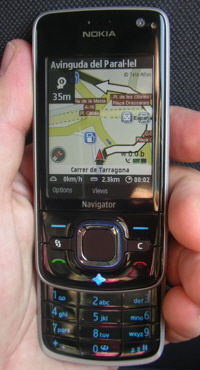Nokia debuts Android phone, sort of


The centerpiece of this device is Nokia Maps 2.0 (think Google Maps meets Tom-Tom), a free subscription navigation service, and integrated GPS. And, oh yes, a built-in compass. We're talking a real, solid state, magnetic compass here, tied in with the map so that as you rotate the phone, the map rotates to show you what you're looking at.
Imagine you're a tourist standing on a street corner in New York wondering how in the heck to get to your hotel (and what was in that hot dog you just ate). With this technology you can whip out your phone and find out. Well, not the part about the hot dog; you're on your own with that.
What does this have to do with Android? The Android software development kit provides programming interfaces to access not only your location on the earth, but also what direction you're facing. It's part of the Sensors class. If the hardware supports it, then you can read off the yaw, pitch, and roll of the device, relative to North.
In hardware sensors currently on the market, a single chip performs the compass function in addition to the accelerometer. Wii remotes popularized accelerometers as a natural way to interact with computer games. Expect to see a lot of moving and shaking of Android phones too. Maybe they should come with a wrist strap?
So while Nokia may never stick Android inside its phones, hardware and software like that used in the 6210 will become more and more common in the future. And thanks to Android, software developers will be able to take advantage of it using a non-proprietary API.
You can simulate the compass and accelerometer sensors on the Android emulator today using the OpenIntents SensorSimulator.